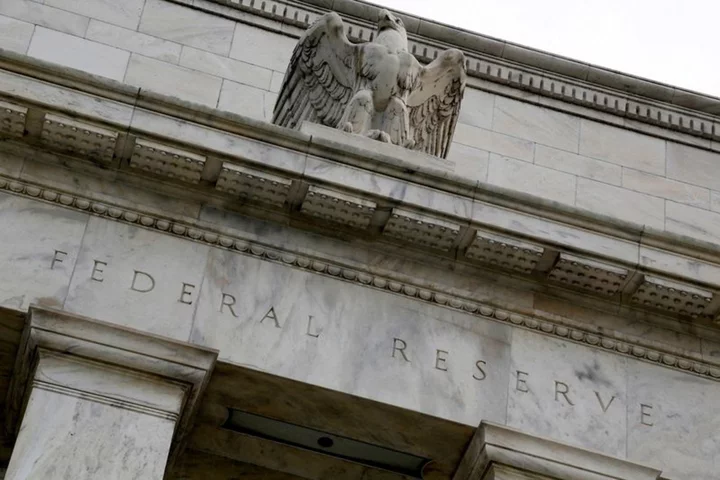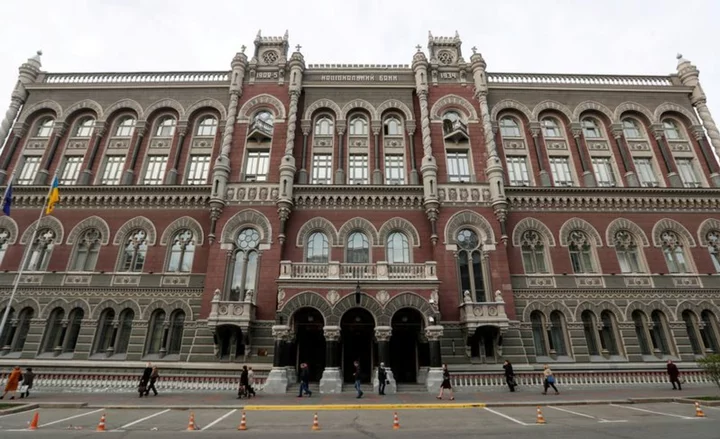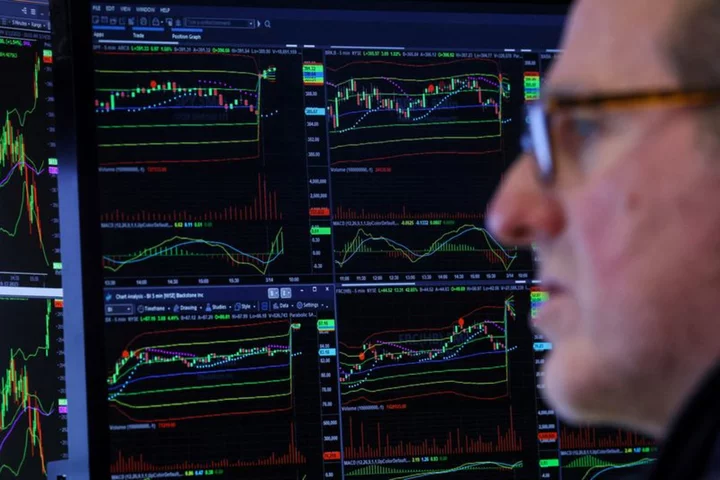By Prerana Bhat
BENGALURU The U.S. Federal Reserve will hold its federal funds rate steady through most of the first half of next year, according to the latest Reuters poll of economists who appear settled on the risk of the first reduction coming later than they expect.
As widely predicted, the central bank left the fed funds rate in a 5.25%-5.50% range for a second consecutive meeting last week and kept the door open to another hike, although apparently with less conviction than before.
"In our base case, the Fed is done hiking, inflation will remain above target and rates will remain elevated across the curve," said Andrew Hollenhorst, chief U.S. economist at Citi.
"The plan now is to be 'careful' - a word used multiple times in the press conference - in further rate increases."
But since then, financial conditions have loosened, with 10-year Treasury note yields falling around 40 basis points and Wall Street shares up for eight straight sessions.
All but 13 of 100 economists polled Nov. 3-9 said the Federal Open Market Committee was done raising rates in the most aggressive tightening cycle in four decades that took them up 525 basis points from near zero.
That compares with 26 of 111 in an October survey.
While 86% of economists forecast no rate cut through the first quarter of next year, a 58% majority said rates would fall by mid-year. That was similar to 55% in last month's survey, which had slipped from more than 70% in a September poll.
Respondents mostly stuck to their views around the risks on the timing of the first rate cut for the third month in a row, with more than 70%, 31 of 42, saying the bigger risk was for the first reduction to come later than they expect.
All inflation measures polled by Reuters - the consumer price index (CPI), core CPI, personal consumption expenditures (PCE) and core PCE - were predicted to remain above the Fed's 2% PCE target until at least 2025.
Fed officials have consistently said interest rates need to remain higher for longer to bring price pressures down.
One thing that might justify an earlier rate cut is a severe economic downturn. But that is looking unlikely any time soon after the world's largest economy posted a near 5% annualized growth rate last quarter.
Still, gross domestic product (GDP) growth was expected to slow to an annualized pace of 1.1% this quarter and average just 1.1% in 2024.
The unemployment rate, which rose slightly to 3.9% last month and has barely increased throughout the Fed's historic policy tightening campaign, was expected to rise modestly to 4.4% by the end of next year.
RBC economist Claire Fan said that even though "softer conditions are showing up more significantly" in payrolls data, there was "still momentum left in hiring activity".
"But clearer signs of moderating wage growth and low inflation readings mean the Fed should not need to hike again in the current cycle, while waiting for softening economic conditions to emerge elsewhere," she wrote.
(For other stories from the Reuters global economic poll:)
(Reporting by Prerana Bhat; Polling by Rahul Trivedi; Editing by Ross Finley and Jan Harvey)









